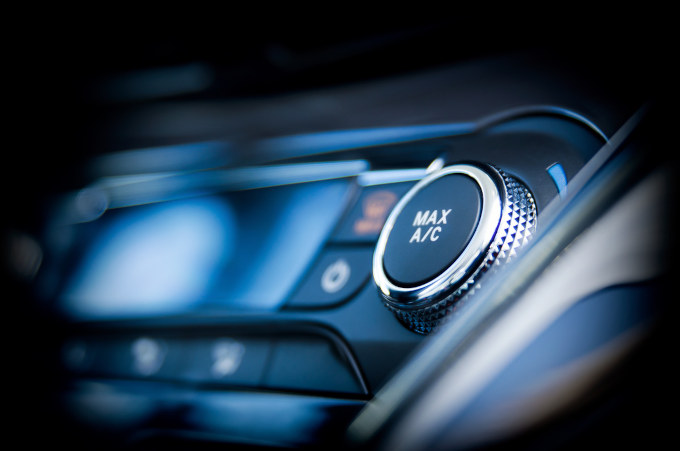Your vehicle’s air conditioning — or A/C — unit is an important and valued component in your vehicle. On the hottest and most stressful day when you’re stuck in traffic and running late, it’s perhaps the most capable component of keeping you cool and comfortable.
In today’s blog article, we’re examining the importance of vehicle A/C maintenance and repair.
What Components Make Up My A/C System?
Several key components make up a typical vehicle’s A/C unit. Maintaining these components and knowing the signs of trouble are the only ways to keep the system working correctly.
These components include:
- Compressor - the “heart” of the entire mechanism, pumping and circulating the cooling refrigerant through the system
- Condenser - turns hot refrigerant gas into cool liquid and is mounted at the front of the system, usually located close to the front of your engine bay
- Evaporator - the last link in the chain; it accepts low-pressure refrigerant, which then absorbs heat from the passenger cabin to cause a temperature drop
- Electrical Controls - the many electrical components that keep the system working properly and the manual controls used by the driver and passengers.
Common Signs of A/C Trouble
Like many systems and components of your vehicle, the air conditioning benefits from regular maintenance and early repairs at the first sign of trouble. If you leave problems within the A/C system unattended, they inevitably turn into much more serious — and more expensive — issues.
So, how can you know if your air conditioner is experiencing problems? Look for the following signs:
1. Reduced Air Flow
Even when turned up to max, do you feel less pressure coming from the vents? If so, there’s no reason this should happen other than something has gone wrong within the system. The most likely explanation is a loose seal or hose in need of replacement. The fan may also be faulty, or there might be mildew buildup within the A/C unit.
2. Warm Air Is Coming Out
Many of us have experienced this disappointing and frustrating moment. You turn on the A/C anticipating that initial cool blast of air only to be greeted by a warm breeze that will do nothing to help keep summer’s heat and humidity out of the vehicle. This issue may be caused by refrigerant leaks but may also be due to a damaged condenser or faulty compressor.
One thing that can happen, for instance, is that the condenser can get clogged with dirt and debris. Your condenser is usually close to the front of your engine bay and is somewhat exposed to dirt and grime via the gaps in the front grille.
3. Ugh, What’s That Smell?
Perhaps even worse than a weak air stream or warm air coming from your vents is when you turn on the system only to be welcomed by an unpleasant smell. There’s typically only one thing that can cause this, and that’s a buildup of mold or mildew within your system.
These contaminants can be cleaned out of the system quickly by a professional, but it’s imperative you get the car to them as soon as possible. Mildew buildup will only worsen over time and can cause health issues to people with allergies or sensitivities to mold.
4. It’s Not Turning On
The worst-case scenario is your A/C simply doesn’t respond when turned on. What’s going on here? The most likely issue is that you have a problem with the all-important compressor, or at least with one of its many smaller parts such as the clutch, valves, or pressure switch.
At the same time, the failure to turn on could mean that there’s an issue with the electronics, such as loose wires or connections, or one of the electrical components has burned out. Electrical systems and components are also challenging to fix, which is why no vehicle owner’s manual ever recommends or encourages DIY repairs on these components.
Why You Should Leave A/C Repair to Certified Pros
In the previous section, we showed you some of the most common things that can go wrong with the A/C and how to detect them. The main components in our introductory list may mention parts that are “more important,” but the truth is that if any one of the main components breaks down, then the whole system begins to fail.
What’s more, these are very specialized, delicate, and high-level mechanics. It’s not as simple as flushing the coolant or switching out an air filter. Here are all the reasons why you should leave A/C repair to the pros.
Reason 1: DIY Might Be Illegal
You might be in breach of Section 609 of the US Clean Air Act by trying to do things like release or flush refrigerant from your A/C system. No matter how knowledgeable and familiar with the components you might be, you have to be an EPA-approved HVAC specialist to safely (and legally) remove refrigerant from an A/C unit. These are harmful chemicals that, if mishandled, can hurt you and the wider environment.
Reason 2: It’s Complicated
The fact remains that the A/C unit is a complex system. Let’s say that you suspect you might have a refrigerant leak. The material you are dealing with is colorless and odorless. What’s more, if and when it escapes from the system, it evaporates into a gas. You can’t see a leak. It takes a specialist with the right tools and know-how to locate and lock down leaks.
Reason 3: It’s Not “Plug and Play”
Purchasing a “DIY recharging kit” for your A/C to save a few dollars is usually a bad idea. The risk of overcharging the A/C system using one of these kits — a serious mistake that can cause serious damage — is just too great. You could exacerbate existing problems or cause entirely new ones like overtaxing the compressor as it tries to move all that refrigerant you just added through the system.
What Is Included in an A/C Service Appointment?
Technicians may perform a minimal check on your A/C just to ensure the fundamentals are in order, or they may perform a more detailed inspection, depending on the system’s condition and your vehicle’s make and model year.
The minor servicing appointment should include at least the following things:
- Visual inspection of chief A/C components (those listed in the introduction)
- Getting pressure readings from the system
- An outlet temperature analysis to reveal how well the cooling system is performing
- Recommendations for repairs or corrective actions to any problems discovered
If the minimal inspection gives cause for concern, the technician will add further steps, especially if the car is older or hasn’t had its A/C serviced for a long time. A more detailed inspection would also be appropriate if a driver has brought the vehicle is specifically complaining of A/C problems.
A more detailed check includes:
- A complete evaluation of the A/C unit’s performance
- Removal of old refrigerant following EPA regulations and federal laws and recharging the system to the appropriate level
- Drive belt inspection and possible adjustment if needed
- Thorough cleaning of the condenser to remove any signs of debris from the fins
- Checks performed on the state of the blower motor and cooling fan
- Use of UV dye in a small sample of refrigerant to circulate at the proper pressure to allow the technician to check for leaks using a black light
How to Avoid A/C Trouble
Here are some recommended ways to prolong the life of your A/C unit and get the most out of this critical system.
Open the windows for 20 seconds.
When you start up your car and turn on the A/C, open the windows and leave them open for about 20 seconds. It may seem counterintuitive; most people think you should always keep the windows closed. In fact, that first 20 seconds will help drop the interior air temperature dramatically, which means less work for the
A/C. When you get in your car on a hot day, outside air is always cooler than in the car’s interior. Remember that trick and help your A/C along!
Set the A/C to the lowest temperatures.
You may think it has to “work harder” to achieve the lowest temperatures, but that’s not the case. When you set it somewhere in the middle, the system has to work harder to reheat cooled air to get it to the right temperature. It wastes power and gas.
Avoid using stop & start if you can
This fuel-saving system is a feature in many newer cars and is designed to save fuel in traffic jams. However, when using the A/C, it’s best not to use stop and start because it’s also cutting off the compressor. The A/C doesn’t always respond well to this on/off cycle.
We're Here to Help
Only allow trained and certified technicians to work on your A/C system. It’s not a system for amateurs!
AAMCO has more than 60 years of experience diagnosing, servicing, and repairing more than 20 million vehicles. Customers rely on us for:
- Quality repairs
- Expert technicians
- Superior customer experience
- Trustworthy, honest service
- Best warranty coverage available
AAMCO Centers of Southern California and surrounding areas represent trust, quality, and value. If you need an A/C service or repair, contact us today!

 Schedule Appointment
Schedule Appointment















